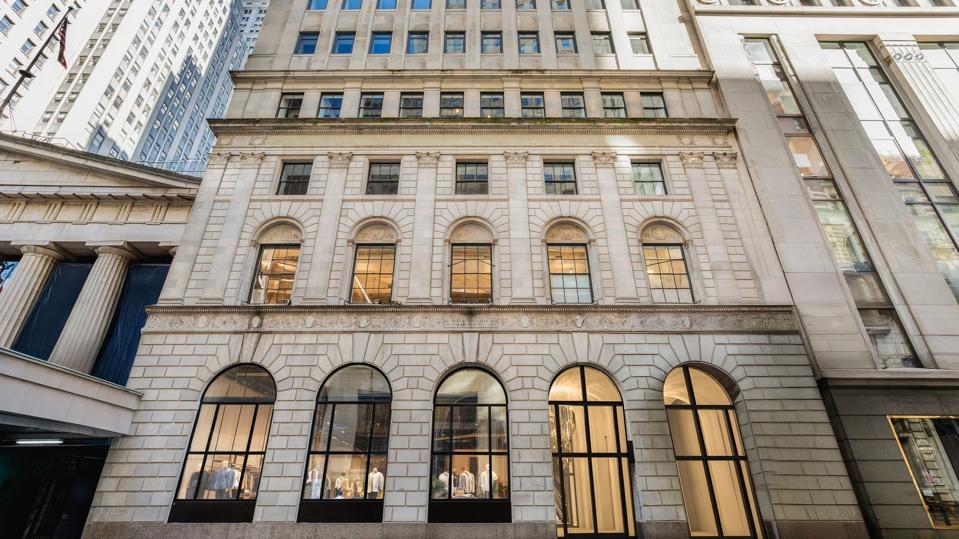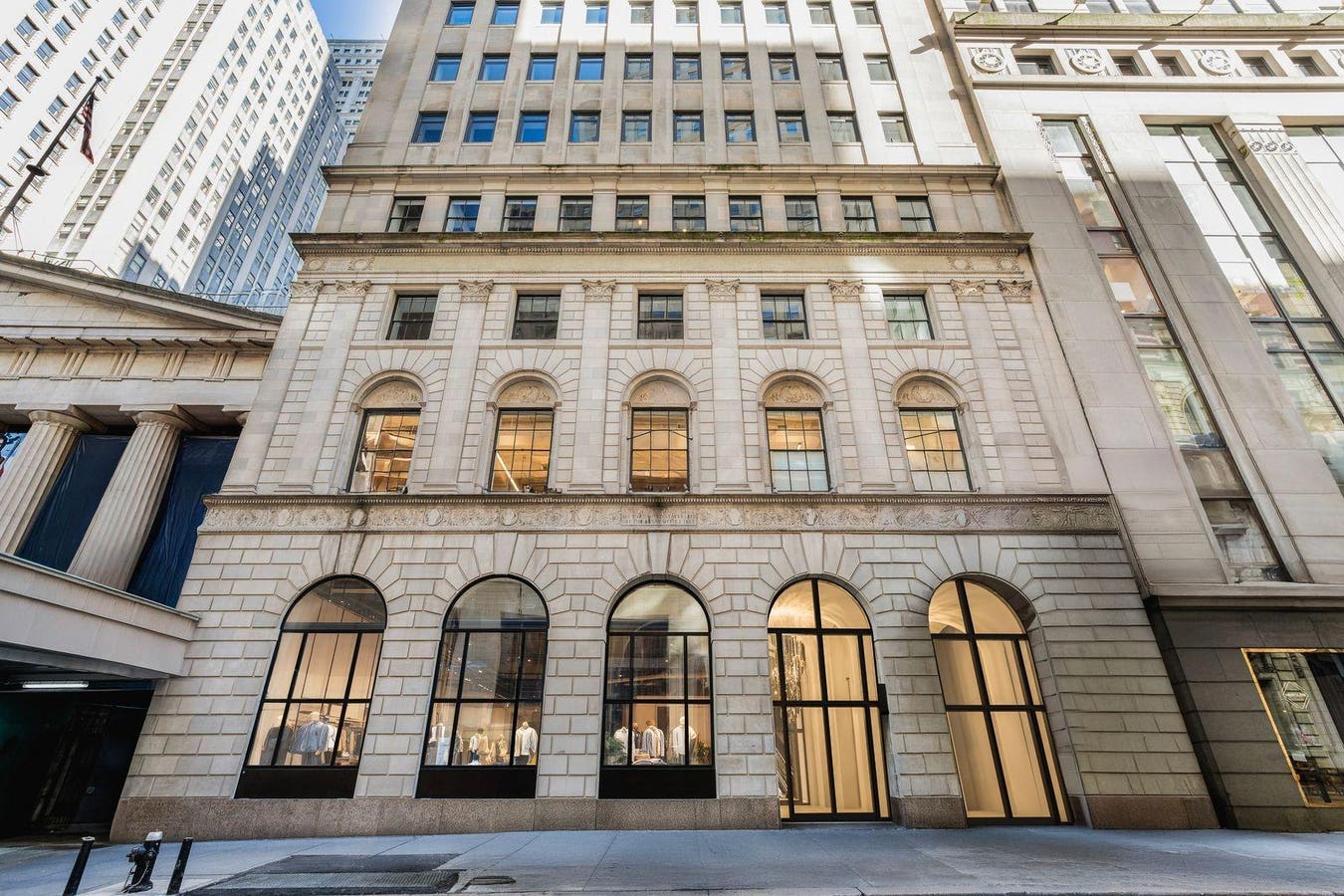
Manhattan’s Financial District is home to venerable 30 Wall Street, with its 50,000 square feet and several floors of retail space that has been renovated and reimagined.
Platinum Commercial
New York City’s Financial District has long been known for such legendary symbols as Federal Hall and the New York Stock Exchange. But could FiDi become synonymous with iconic retail brands as well? Look what’s happened in a little less than a year.
Sephora signed a lease for a 5,000-square-foot store at 175 Broadway last December. Luxury French department store brand Printemps opened a 55,000-square-foot, two-floor location at One Wall Street in March. Brooks Brothers unveiled a 5,000-square-foot store at 195 Broadway in late July. And in late August, Barry’s Boot Camp announced it would be opening a 9,000-square-foot Financial District retail outpost “soon.”
The move of these and other glittering retail establishments into a bailiwick once known for being remarkably dull makes sense. According to Cushman & Wakefield, retail asking rents in the Financial District average about $234 per square foot, just a bit more than a quarter (26%) of the asking rental rates on Madison Avenue. They are the lowest retail rental rates of any major Manhattan shopping district.
Given the district’s traditional office density, FiDi is not just a transit hub, but more recently a nexus of office-to-residential conversions. Retailers are naturally heading in the same direction as the incoming population of the district. Little wonder Lower Manhattan tallied two dozen new store openings in the first quarter of 2025.
Retail transformation
“With some of the best transportation options in Manhattan – accessible by car, ferry and multiple train lines – the Financial District is undergoing a major residential and retail transformation,” says Khashy Eyn, CEO of Platinum Commercial, a company marketing 30 Wall Street, a 12-story historic commercial building with 50,000 square feet of renovated retail space. “Interest has been strong from luxury spas, global retailers, private clubs and more . . . The corridor continues to attract high-end and international retailers set to elevate the area even further.”
To call 30 Wall Street historic is understating the case. In the 1800s, the building served as home to Bank of the United States and the Bank of the State of New York. In the 20th Century, it housed the United States Assay Office and Seaman’s Bank for Savings.
Hospitable district
Alongside the new retail, the hospitality industry is poised to start serving up new restaurant concepts in FiDi. The district’s venerable Cammeby’s- and Witkoff Group-owned Woolworth Building has announced it will welcome a pair of restaurants helping revivify the ground floor. At 8 Park Place, occupying the former five-and-dime space, the first of the restaurants will be an all-day café and wine bar that transforms from daylight hours’ fast casual breakfast and lunch spot to evening-time intimate bar.
The second bistro, in a space formerly known as Wooly Public, will be a 5,000-square-foot, Italian-inspired, morning-to-night full-service dining experience, incorporating multi-functional space for occasions from private events and art exhibits to live performances.
All of the fresh new retail and restaurant concepts are following a two-decade wave of residential development and conversions that brought tens of thousands of new denizens to the quarter between 2005 and 2024, morphing FiDi from a nine-to-five business district to a lively community operating 24-7. According to various estimates, the Financial District was home to about 23,000 residents as of Y2K. About 15 years after, it had almost doubled to 43,000 and a decade later stands at about 70,000.
The developments include 25 Water Street, a one-time office building that now features 1,300 housing units and is the largest U.S. office-to-residential conversion; 55 Broad Street, the former Goldman Sachs building that now incorporates 570 residences; Pearl House at 160 Water Street, with 588 residences; and 130 William Street, a ground-up condominium tower adding more than 200 units to the district.
Keen observers haven’t missed one additional harbinger of FiDi economic growth. CBRE’s Manhattan retail figures found fewer retail spaces in Q2 than Q1 2025 across Manhattan’s 16 premier shopping corridors. The broader scarcity should benefit FiDi’s retail growth, not to mention the tens of thousands of FiDi residents who like to shop close to home.

